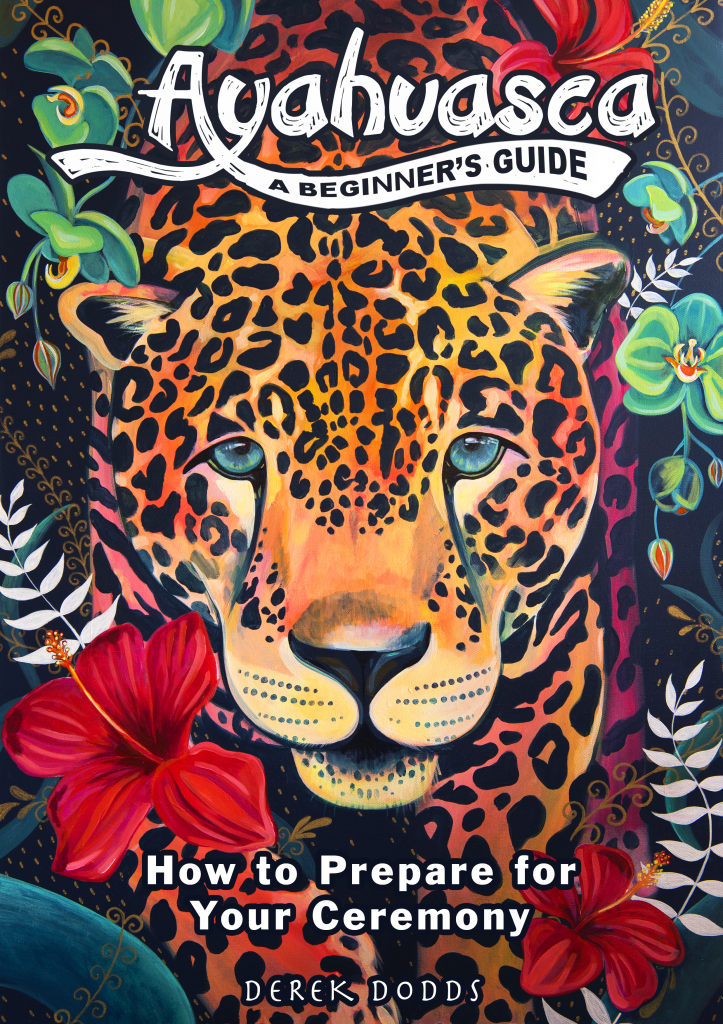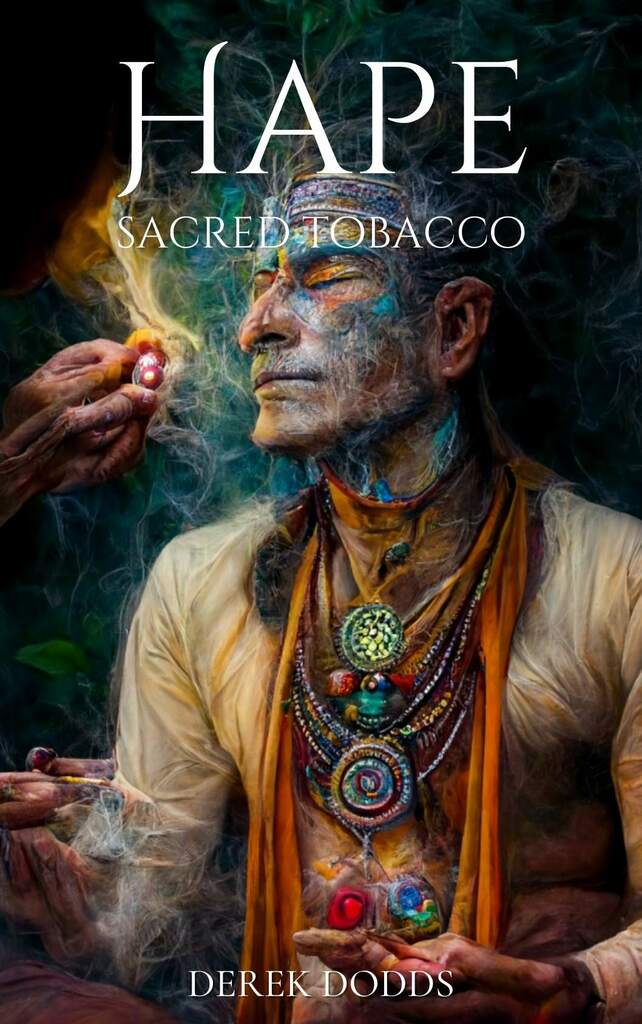Lord Shiva Deity – The Destroyer & Regenerator
I just returned from the Bhakti Fest in Joshua Tree, California. Bhakti Fest celebrates the devotional paths of yoga, Kirtan (sacred music), and meditation. Most of my devotion to the Vedanta lineage has focused on the Goddesses—Bhakti 2023 opened me up to Shiva in a new way. Thus, I dedicate this article and art to Lord Shiva Deity, the Destroyer & Regenerator.
Shiva: Destroyer & Regenerator
Brahma is the creator, Vishnu is the sustainer, and Shiva is the destroyer and regenerator. He is the destroyer for those clinging to the idea of I, me, and mine. Shiva works on our egoic structure and helps dissolve it. Shiva regenerates those who have released these egoic aspects of self. To initiates and aspirants, Shiva is the embodiment of infinite consciousness and goodness, nudging our souls toward the divine.

Art © Derek Dodds
Shiva’s power is an inherent aspect of his makeup. Shiva is hailed in extreme opposites: destruction and rebirth, benevolent and vengeful, or monastic and pleasure-seeking—Shiva is the destroyer and regenerator. His destructive force is such that his shrines are placed separately from all other gods in temples.
One form of Shiva’s destructive power is in Shiva’s third eye. This power is a fiery, encompassing force capable of overpowering gods and demons. Parvati covers Shiva’s eyes playfully in one story and nearly destroys the cosmos when his third eye opens in reaction. Need help to decalcify your third eye—see my article on working with sacred tobacco.
Lord Shiva’s Lingam and Yoni
The linga or lingam is an abstract form that symbolizes Lord Shiva Deity in all parts of Hinduism. The lingam represents “total harmony of the indivisible one, the pure essence of the universe,” writes Robert Ryan in his book Deity.
In the story of the first lingam, Shiva disavows all material things and performs deep meditation and other asceticism. His state lasts so long that he builds an uncontrollable amount of heat. He transforms into a fiery pillar, threatening to destroy everything before it is due. The gods didn’t know how to stop Shiva’s power.

Lord Shiva Deity © Derek Dodds
The mother goddess created a yoni, her divine symbol, which captured Shiva’s fiery lingam. Destruction was staved off. The lingam became Shiva’s idol and, in worship, is bathed with a mixture of milk, water, and honey.
Lord Shiva Deity Symbolism and Worship
Shiva is described with a blue face and throat, though he’s often pictured as entirely blue. Ancient Egyptian texts also speak of blue beings, and Matis Destepheno (who claims to remember his past lives) states that the priest class of Atlantis was Blue. Interesting.
Shiva has two or four arms and a serene demeanor. He’s seated, in a yogic pose, in simple surroundings, clothed in tiger skin, which symbolizes victory over animal instinct. He wears a pair of earrings, one for a man and the other for a woman. This expresses his inherent duality.
Lord Shiva Deity has a third eye representing wisdom, and his fiery power over worldly illusions is contained. The eye is often portrayed with three lines of white ash to symbolize its unmatched destructive power. Once, while meditating, the love god Kama interrupted Shiva. Shiva opened his third eye and reduced the love god to ash. Later, Parvati convinced Shiva to restore Kama’s life, so the ash covered his third eye.
The holy Ganges flows from the top of Shiva’s hair, piled on his head. The river represents knowledge, so this depiction symbolizes knowledge flowing from Shiva. Tucked into his hair is a crescent, representing the moon goddess and symbolizes fertility and the god of nightly love, Kama.
Lord Shiva Deity Symbolism
He wears a cobra around his neck named Vasuki. The cobra symbolizes his power over perilous creatures, his destructive power, and his mastery of passion, and sometimes highlights the need to shed old skin to make way for the new.
Lord Shiva Deity holds a trishul, or trident, symbolic of his three roles and the three gunas or qualities of Prakriti, or energy. A small drum is often pictured within the Trishul. His son, Ganesha, has the trishul painted on his trunk as a homage to his father and the three ganas.

Lord Shiva Deity The Destroyer & Regenerator © Derek Dodds
Shiva holds a rosary, which symbolizes meditation and grace. He’s sometimes depicted with a skull or crown of skulls, symbolizing the life cycle. He’s often pictured with Nandi, the white bull symbolizing dharma or fertility, and Shiva’s Vahana (celestial vehicle). When depicted together, Parvati is always alongside Shiva as his equal.
In other icons, Lord Shiva Deity is depicted with an androgynous appearance known as Ardhanarisvara. In these representations, he is half man and half woman, with his features split directly down the middle. These icons have half of Shiva’s face, with the other half being that of Parvati. Shiva is known as the ideal husband, as his relationship with Parvati expresses his power and extremes in balanced ways.
Lord Shiva Deity Temples and Altars
There are many temples and shrines to Shiva in South and Southeast Asia. Deep within these temples lies the sanctum sanctorum, where a lingam is enshrined. In general, only gurus are allowed within this holy place.
At the shrines of Shiva are icons that depict those closely associated with him. Among these are his sons, Skandha and Ganesha, the goddess Shakti, and the image of Ardhanarisvara.
There are 108 temples associated with Shiva or have a shrine dedicated to him in India alone. There’s a shorter, more pointed list dedicated to the pilgrimage of devotees. Of these, a short list of the most exciting or mysterious include:
- Kaal Bhairav Nath Temple. Located in Uttar Pradesh, this temple is dedicated to Kal Bhairav, an avatar of Shiva. Alcohol is used as an offering.
- Kailasa Temple. Located near the Ellora Caves in Maharashtra, it’s the largest temple cut directly from the stone in the 1500s, with 30 million Sanskrit carvings on its walls.
- Lingaraia Temple in Bhubaneshwar, Odisha. This is the largest in the region and has a massive area dedicated to Shiva. The lingam within is said to have appeared by itself, and it is also said that both Shiva and Vishnu visited the temple near its completion.
- Stembheshwar Mahadev Temple. Found in Kavi Kavoi village, this temple is only visible during low tide.
- Meenakahi Amman Temple. Located in Madurai, it is dedicated to both Shiva in the form of Sundareswarar and Parvati in the form of Meenakshi. In this temple are 4,000 pillars made from a single rock and an icon of Shiva smiling, which is rare.
- Kedarnath Temple. This temple is located in the Garwhal Himalayan range in Uttarakhand and is famous for its proximity to Shiva’s home. It can be reached after a 10 to 12-mile hike into the mountains.

Shivacharyas, or teachers, perform daily rituals in the temples focused around and on Shiva’s icon. The icon is bathed in holy oil, milk, honey, water, curd, and other substances before it’s sprinkled with blossoms. Garlands of flowers and jewels are used to adorn the icon. Then, incense is burned, a rice offering is made, and lamps are lit and presented to Shiva. The lamps are carried to the worshippers, who cover the fire with one hand and then cover their own eyes. Lastly, a mixture of turmeric, slaked lime, and holy ash is distributed, and worshipers use this mixture to place three symbolic lines on their foreheads. When these steps are completed, devotees circumnavigate the idol at least once and then pray to Shiva toward the sanctum sanctorum.
Shiva Home Alter
When worshiping Lord Shiva Deity at a home altar, his idols should be placed in the northeast portion of the space, which is believed to be closest to his home in the Himalayas. This placement is also considered best for the idol’s energies.

DD’s Home Alter
Some believe it’s unwise to have more than one form. The lingam stone is often utilized on the altar, symbolizing Shiva’s omniscience and formless nature. It’s just as common to have two idols in this space, usually including a lingam and an idol of one of Shiva’s other forms.
I recommend Lotus Sculptures in California if you want to order a Shiva murti.
Shiva Festivals
Several regional festivals focused on Lord Shiva Deity. The Pooram feast is held in April or early May in Trichur, Kerala. During this festival, there’s a grand procession of elephants in combat formation down the streets. Drum beats, the crash of cymbals, and the sound of bugles can be heard from dawn to dusk.

The more well-known festivals are Shiva Ratri and Maha Shivaratri. Shiva Ratri takes place on the 14th day of the waning moon in late February or early March. Shiva Ratri means the night of Shiva, and Shaivite temples are elaborately decorated on this day. Devotees line up to show their respect for the god. Some devotees imbibe a drink made from milk, almonds, and cannabis to symbolize Shiva’s numbed demeanor. They also sing devotionals and dance to the drums.
Maha Shivaratri Shiva Festival
The most famous festival, Maha Shivaratri, celebrates the anniversary of Lord Shiva Deity and Parvati’s union. Maha Shivaratri means the great night of Shiva. Maha Shivaratri is a larger, more detailed version of Shiva Ratri, held on the 14th day of the dark lunar month in January or February. Devotees fast and perform a special all-night worship of the lingam idol.
This festival symbolizes Shiva and Parvati’s anniversary, Shiva’s dance of destruction, and the poison Shiva drank to save the world when the celestial ocean was stirred.
To connect with Lord Shiva Deity, I recommend listening to this version of Krisha Das’s mantra, which I was honored to experience at the Bahati Fest this year. Let Shiva, the destroyer and regenerator, guide your path.









0 Comment